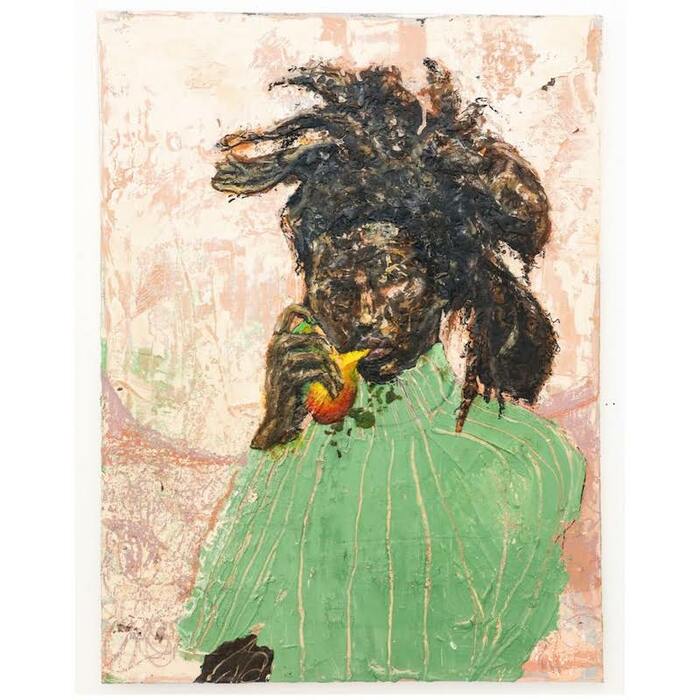
Image Credit | Kirk Henriques | How to eat a Mango, 2021 | Oil on canvas | 30 x 40 x 1.5 inches
Private Viewing: November 13, 2-4 pm
Opening Reception: November 13, 4-8 pm
The term gastropoetics was first coined in 2002 by Parama Roy when she closely examined how diasporic and migrant narratives are interpreted through the archives of colonial food practices for diasporic migrants. Other postcolonial scholars later describe gastropoetics as an alternative form of knowledge production or act whereby food becomes both intellectual and emotional anchors for social construction, archiving, and communication. Together, Jamaican American and Haitian American diasporic artists Kirk Henriques and Alexandra Antoine, respectively, visualize the beauty and the future of gastropoetics through their visual art making that interweaves the intimacies of food, language, grief, love, and desire. Together, they share a vision, of and for food, that is to be examined not only within the body but outside of it through our senses of taste, touch, sight, smell, and sound.
For the painter Kirk Henriques, his work confronts the social and ecological construction of space and visual representation that embody culinary traditions that Black folk from the Caribbean continue to practice, metabolize, and un/make. And for Alexandra Antoine, a farmer and interdisciplinary artist, she explores the elements of life and death for Black folk and how food and land act and perform as sacred storytellers that preserve the legacies of Black folks from the Caribbean (more broadly) and Haiti (more specifically) for generations.
Gastropoetics is comprised of artwork that pays attention to the body, both corporeal and epistemic, and to what we consume, ingest, and share. The artwork by both artists enable the possibilities for various cosmos to be glimpsed, together as well as and apart. As viewers, we are privy to view the beautiful entanglements of ordinary acts that are centered in the bellies of the Black Carribean diaspora.



